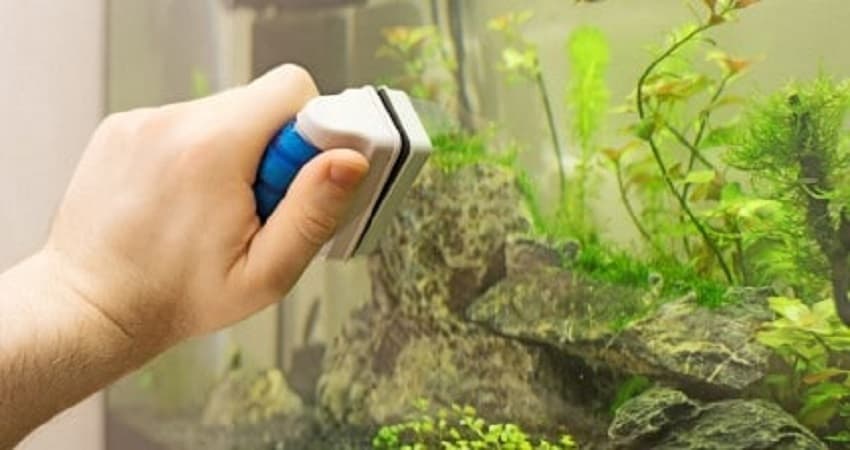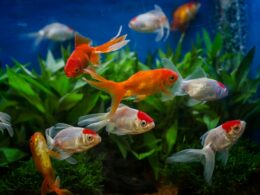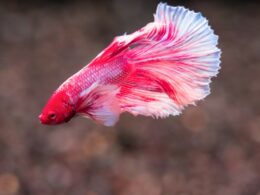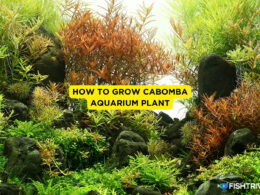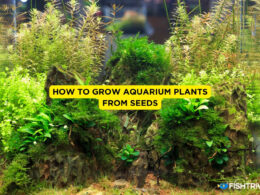In this article Show
Cleaning aquarium decorations are notoriously tricky, mainly when they are covered in algae. Attempting to clean algae off with soap or detergent, which is highly poisonous to fish, is a bad idea.
Cleaning your tank and making daily water changes are essential for the health of your fish. On the other hand, healthy bacteria will naturally build up in the tank, and scrubbing all of the décors at once will deplete these bacteria.
Aquarium decorations and plastic plants, for example, necessitate extra work to keep clean. If you don’t clean them out regularly, they’ll grow algae.
However, using chemicals to wash and clean off algae and other toxins is not a good idea. Detergent and soap are highly poisonous to fish and can kill them.
This article will show you how to clean plastic aquarium plants. So, let’s get this post started.
Also worth reading;
- 7 Reasons Why Your Aquarium Plants Are Dying: Always Check These
- How To Anchor Aquarium Plants
- The Best Floating Aquarium Plants For Fry, Shrimp, and Betta
- Can Aquarium Plants Grow in Cold Water? What’s The Best Temperature
- Hornwort Aquarium Plant: How to Grow & Proper Care
What Is An Aquarium Plant?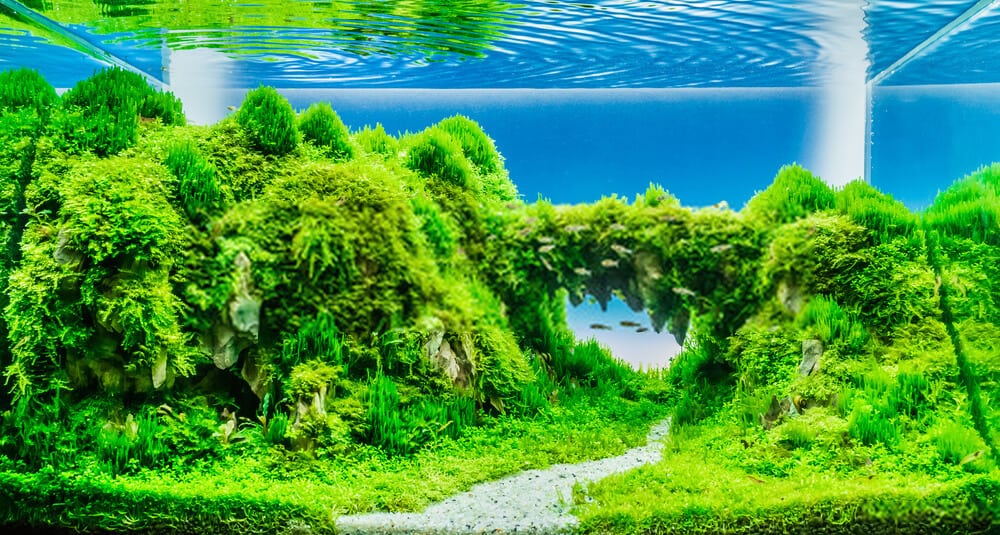
Aquatic plants are plants that have been specially adapted to live in water. They’re sometimes named hydrophytes or macrophytes to distinguish them from alga and other macrophytes.
Fish and life in lakes and rivers benefit from macrophytes because they provide shelter, a substrate for aquatic invertebrates, produce elements, and provide food.
Macrophytes, or primary producers, are the muse of many organisms’ food chains. They need quick water flow, riveting pollutants, and caparison sediments to affect soil chemistry and light levels significantly. Plant stems, leaves, and roots slow water flow, allowing excess sediment to settle into the benthos.
To live underwater or near the water’s surface, aquatic plants need distinct variations. Aquatic plants may only grow in water or permanently wet soil. Water plants provide a haven for a variety of small aquatic animals as well as protection from predators.
What Is An Artificial Aquarium Plant?
Artificial plants have advanced to the point that they now resemble natural plants in appearance. They will not die, grow too big, or become tattered and unattractive, unlike live plants.
They can easily be removed and washed if they get polluted or coated in algae. To ensure that no harmful bacteria or pests remain, it can disinfect them with bleach.
Artificial plants do not need any additional lighting than live plants, which need more than the average fish keeper for their aquarium. Silk and plastic plants are available year-round and come in several sizes and colors.
They would not introduce rodents or parasites from other aquariums into yours because they have never been in one before. They won’t decompose and pollute the tank.
Granted, they won’t benefit the environment as much as live plants do, but they’re still a good choice – particularly for beginners. Artificial plants are also a good alternative for fish that are vulnerable to uprooting or eating live plants.
How To Clean Plastic Aquarium Plants?: Step-by-Step Guides
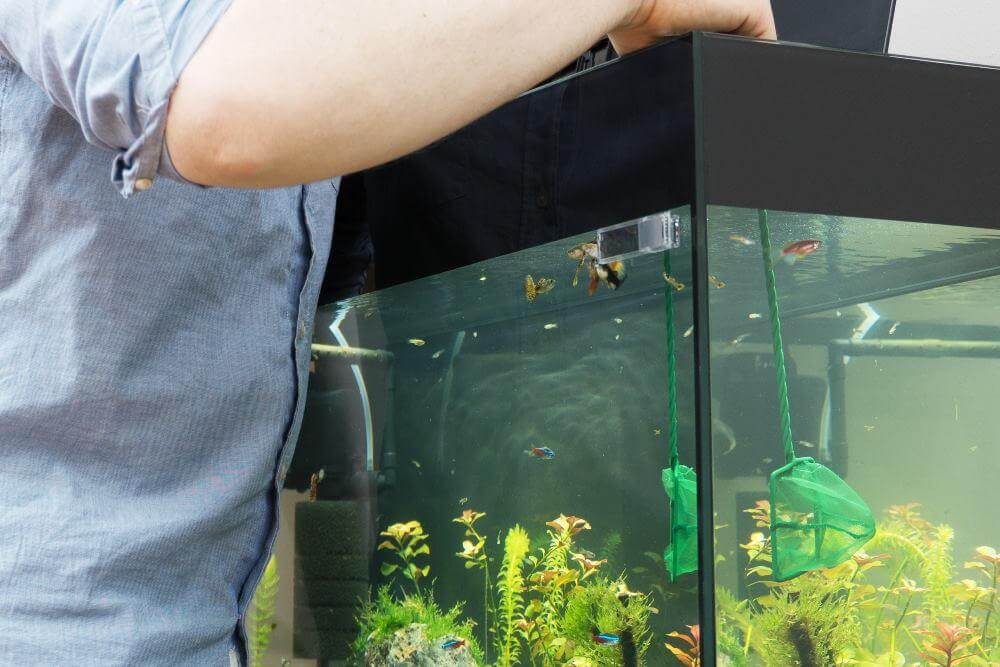
1. Water That Has Been Boiled
Here, you can use boiling water to extract algae from your plastic aquarium plants.
All algae are easily killed by hot water. You can clean them off the plant surface until they’ve died. This approach is perfect because it prevents your fish from being exposed to harmful chemicals.
I am using a pot to bring clean water to a boil. Move the water to a clean container after it has been sufficiently heated. Insert the plastic plants into the boiling hot water as soon as possible. Allow 10 to 15 minutes for the plants to soak in the boiling water.
Remove any algae that have remained on the surface with a scrub. Replace the aquarium’s clean and cool plastic plants.
2. A Type Of Vinegar That is Used to
Calcium residue can build up on plastic aquarium plants as a result of water evaporation.
You should simply use a vinegar solution instead of scrubbing the surfaces for hours. It’s a chemical-free option that doesn’t hurt your fish in any way. Vinegar solution recipe: In a clean tub, combine a half-gallon of sterilized water and a half cup of vinegar.
Fill a clean spray bottle halfway with the vinegar solution. Should spray the mixture on the plastic plant’s surfaces. Wipe the residue away with a soft rag. Place the plastic plants back into the tank after rinsing them with clean water.
3. Solution Of Bleach
Plastic plants can become highly polluted and are unable to be washed effectively with boiling water and vinegar.
This is usually due to a lack of regular maintenance and cleaning. In such instances, the only alternative is to use a bleach solution. Here’s how to safely produce and use bleach solutions.
To make a bleach solution, carefully combine one part of the bleach with nine parts of water. Allow 10 to 15 minutes for the plastic plants to soak in the bleach solution. Remove the surfaces from the bleach solution and soak them for at least 15 minutes in clean water.
Rinse and clean the surfaces thoroughly with running water for a few minutes. Return the plants to the aquarium.
Things To Keep In Mind When Washing Plastic Plants
These are the things to bear in mind when washing plastic plants;
1. Taking the Plastic Plants Out
Plastic aquarium plants are a great choice because they are easy to care for. It’s easy to clean up the dust that has accumulated on the surface of your plants.
Make sure your hands are clean or wear clean gloves at all times. Separate the plastic plants from the substrate by gently holding them from the bottom.
If something is stuck to the bottom, gently move the plant back and forth. To stop dripping, remove the plastic plants and put them in a clean tub.
The method of cleaning with boiling water is the best choice. The majority of algae and other toxins are quickly removed with hot water.
2. It Should Not Use Household Chemicals.
You may be tempted to clean the plastic plants with laundry detergent. Even if the algae or other residue accumulation appears to be excessive, you must resist. Boiling water may be used to disinfect it.
Household chemicals such as soap, sanitizers, and detergents are particularly harmful to your aquarium’s ecosystem. Chemicals affect fish. It can kill your fish within minutes of exposure if you’re not careful.
It’s also essential to clean your aquarium with new or different cleaning equipment. When it comes to keeping your fish alive, you can never be too vigilant.
3. Keep Beneficial Bacteria Healthy
These bacteria are essential for a healthy aquarium ecosystem. They turn the fish’s toxic ammonia waste into non-toxic nitrates.
In aquariums, beneficial bacteria form colonies. They play an essential role as cleaners. Some of them consume algae in addition to ammonia waste.
As a result, you must ensure that your cleaning activities do not eradicate beneficial bacteria. These bacteria are harmed by constant washing and scrubbing.
Plastic Aquarium Plant’s Advantages
Some purists will object to plastic plants, and if I go the biotope path, I would, of course, try to use natural products wherever possible. On the other hand, artificial plants have a position among aquarists of all levels, not just beginners.
Artificial plants do not need advanced lighting, fertilizers, nutritious substrates, or CO2 because they are not alive. Since the Zydeco plants are weighted, they don’t need a substrate, making them suitable for quarantine or hospital tanks.
They’re also not picky about water, so they can be used to significant effect without compromising water quality. They’re also quick to clean, requiring only a wipe with an algae pad, brush, or spray with the showerhead to remove any algae or detritus and restore their original appearance.
When it comes to algae, these are the plants on which you can unleash nature’s entire algae-eating crew without fear of the plants being eaten. Snails, suckermouth catfish, shrimp, and algae-eating sucking loaches will all clean them and enjoy the cover and protection they offer.
How Do You Clean New Aquarium Plants Made Of Plastic?
New plastic aquarium plants can be polluted with dust and other particles when purchased. As a result, it’s a good idea to disinfect them before putting them in your tank. The new plants do not need sterilization.
It will only take you ten minutes to clean them. You can rinse the surface of your new plants with cold running water.
Fill a clean container halfway with cold water. Then, for 10 to 15 minutes, put your new plastic aquarium plants inside it. It should be adequate to eliminate any soil particles from the plant’s surface.
Frequently Asked Questions
What is the most convenient method for cleaning plastic plants?
Fill a spray bottle halfway with vinegar and halfway with water. It should spray the solution on your artificial plant. Allow the vinegar solution to sit for five minutes if you have a particularly stubborn build-up. Wipe away as much vinegar and dust as you can with a clean damp rag.
Are aquarium plants made of plastic safe?
Aquarium plants made of plastic are entirely safe to use in aquariums. They’re a perfect alternative to natural plants and don’t need much upkeep. Since plastic is incredibly durable, it is improbable that it will ever need to be replaced. Algae can be washed off the surface of plastic plants with water and an aquarium.
What’s causing your fake aquarium plants to turn brown?
Brown algae may also indicate that your aquarium’s water chemistry is out of control. After ensuring sufficient lighting, the next goal should be to improve water quality.
How can you remove the odor from fake plants?
Wiping each leaf gently with a soft cloth dipped in water, and distilled vinegar solution can greatly assist. You may think that washing each leaf individually takes a long time, but you do it every spring for all of your silk plants. The smoke smell would be significantly diminished, if not entirely replaced, by the vinegar.
What is the easiest way to straighten fake plant leaves?
In the box, some of the leaves may have been slightly creased. Usually, you should straighten these out with your fingertips. Within a few days, any residual creases will fall out naturally. If you don’t want to wait, use an iron or hair straightener to add some low heat to the foliage.
What’s the best way to make fake leaves look real?
If your fake plants are just anchored in rocks or an empty container, they will appear fake. The best choice is to place them in opaque planters or glass containers filled with a small amount of water or mud to give them a realistic appearance.
Conclusion
Aquarium plants are classified into two categories: living and artificial. Artificial plants are available in both plastic and silk and when submerged, they resemble live plants. Live plants, unlike artificial plants, are much more challenging to keep clean.
You can’t expose it to something that could harm it, stifle its growth, or affect your pet fish.
We can say that this content will provide you with valuable ideas on how to clean your aquarium plants with natural ingredients like vinegar to make them look brand new and healthy for your pest fish.






